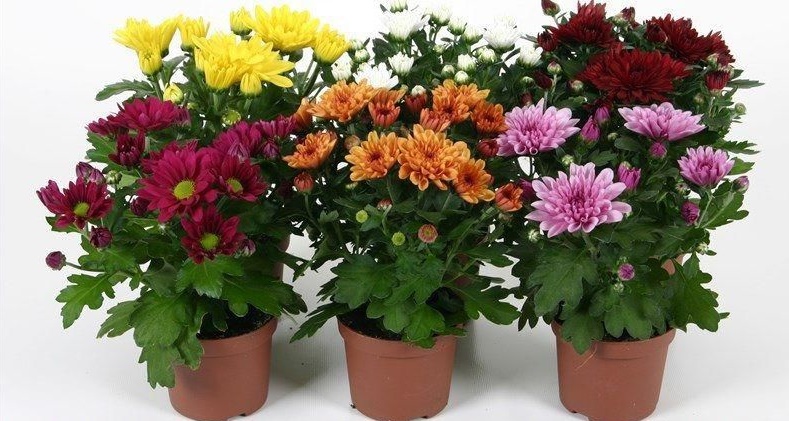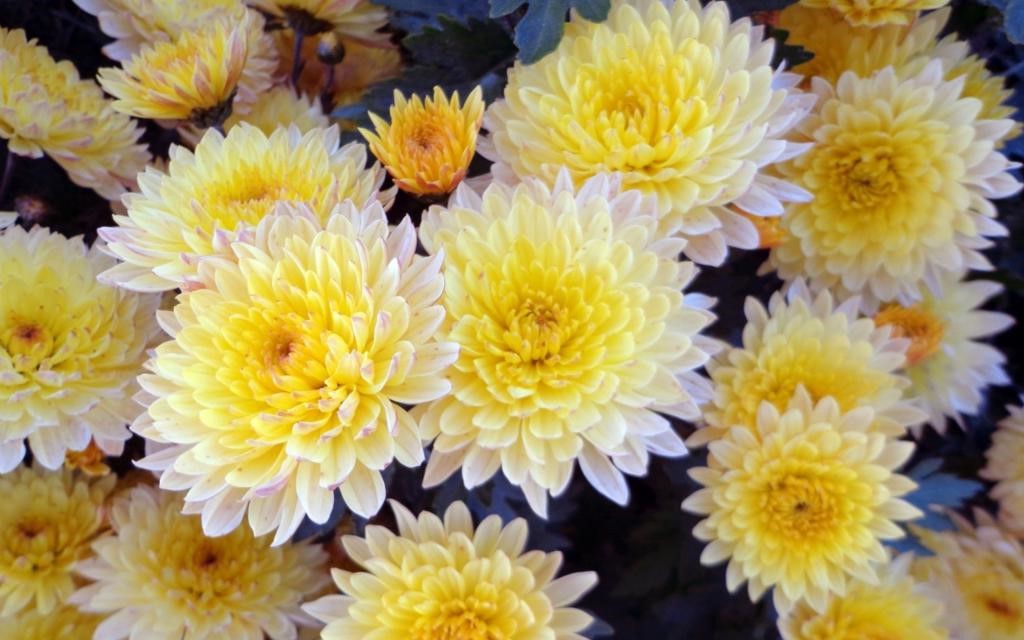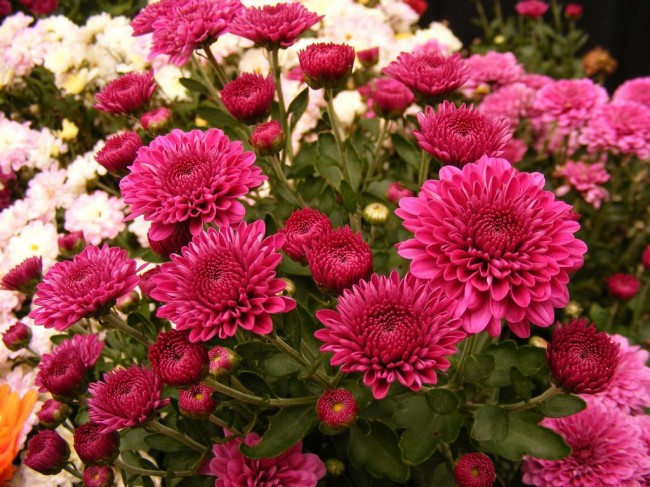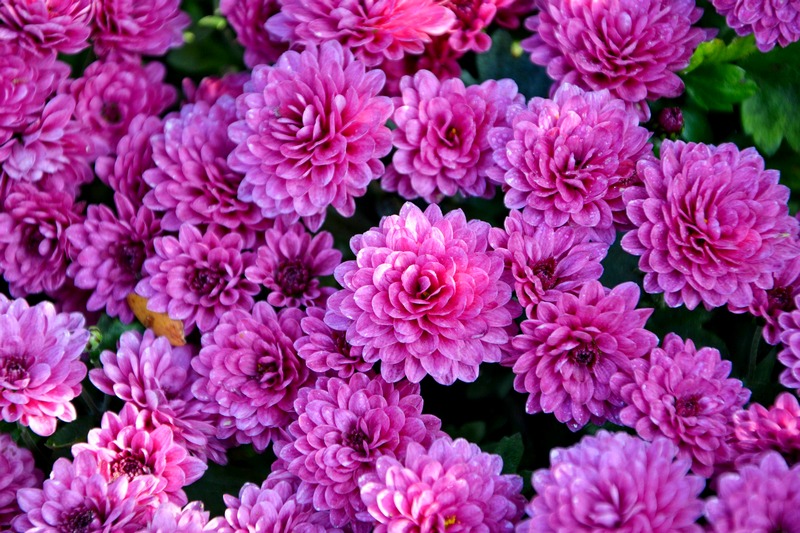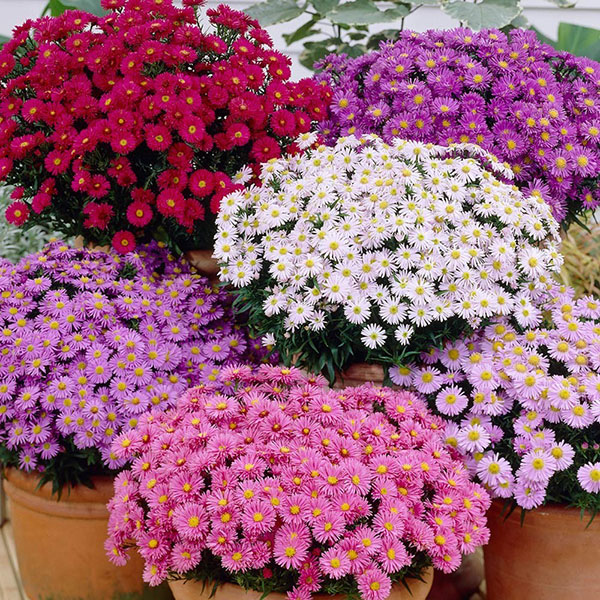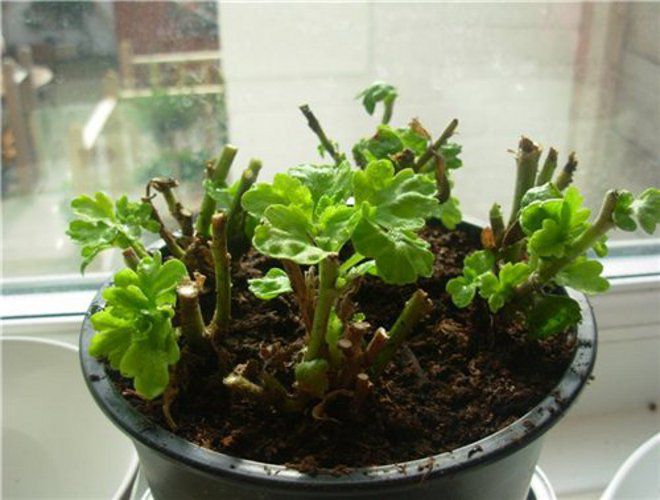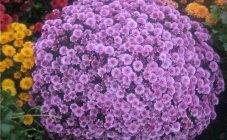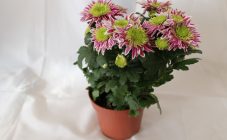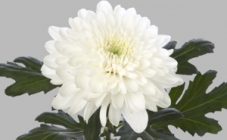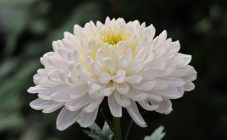Content:
One of the autumn flowers that bloom for a long time are chrysanthemums. These herbaceous plants belong to the class of Asteraceae, or Asteraceae. They can be grown both outdoors and indoors. If they grow outdoors, they can reach 1.5 meters. Flowers delight with their variety of colors and sizes. Propagated by both seeds and cuttings.
Chrysanthemum what is? Chrysanthemum is called the "golden flower", it is no coincidence. Chrysanthemum meaning flower: in the Greek translation it will be "flower-sun", in Latin - "gold-colored". Its homeland is China and Japan. Initially, a chrysanthemum with bright yellow flowers was bred. Currently, breeders have significantly expanded the variety of varieties, currently there are about 2000 known.
The flower came to Europe from the Far East, where it was considered the flower of the emperor. Now it is one of the most popular plants in the autumn garden. Chrysanthemum bouquets delivery is very popular. When gloomy autumn days with drizzling rain come, they will certainly delight their owners with a variety of shades and long flowering.
Focusing on the language of flowers, you can learn to give chrysanthemum correctly. Although the variety of shapes and colors allows you to choose a flower for any occasion, there are some subtleties. Chrysanthemums for what and to whom? White flowers are given as a symbol of loyalty and purity to loved ones. Yellow - give as a wish for wealth and health. Chrysanthemums of all shades of red symbolize love and affection, they are presented to the closest and dearest people. Pink and lilac - a sign of originality, blue - mean a symbol of friendship, they can be given to colleagues at work, both men and women.
Main characteristics
Thanks to the work of breeders, a large number of combs of this plant have been bred. What are chrysanthemums? Depending on the variety, chrysanthemum can be both perennial and annual, grown both in the open field and at home in a pot.
If we talk about annual plants, they came to Russia from the Mediterranean. Most often, there are such representatives of them as varieties of sowing chrysanthemums, crowned and keeled. They are distinguished by fast growth, unpretentious care. Their flowers are simple or semi-double, the fruit of the chrysanthemum is baskets with a large number of seeds. Flowering dates are from early summer to October. They grow best in fertile, well-drained soils.
When choosing: annual or perennial chrysanthemum, indoor or for outdoor use, perennial varieties that came from China, Japan and the countries of Southeast Asia are more popular. The first mention of them in the Russian press was in the magazine "Gardening" in 1844. Domestic representatives are also well known.
What do chrysanthemums look like? These are plants with strong stems and a fibrous root system located in the ground at a depth of 30 cm. Chrysanthemum leaves are green: from light to dark shades, alternate, located on petioles.
Chrysanthemum flower has inflorescences of Asteraceae baskets. The variety of shapes and sizes is quite large, depending on the variety. Also, the number of flowers per plant is directly dependent on varietal characteristics. Even more striking is the variety of shades of flowers: these are snow-white flowers, and purple, and red-yellow so popular in the East. They are all classified into several groups.
Classification by species and varieties
Perennial chrysanthemum flowers surprise with their diversity, their classification is made according to different parameters.
Cycle of life
- Annuals. Grown from seed, requires annual planting. The advantages are the long flowering period and resistance to cold temperatures.
- Perennial. The life cycle is over 2 years. All perennial chrysanthemums are divided into two groups: Korean (the second name is curb or undersized) and greenhouse (the main purpose is to cut for bouquets, where they will look good). Korean representatives are distinguished by their unpretentiousness to adverse weather conditions.
Flowering period
When do chrysanthemums bloom? It depends on what type they belong to:
- Early. Bloom in early autumn.
- Average. The flowering period is October.
- Late. They enter the phase of abundant flowering in November.
Cold resistance
Chrysanthemum species are divided into two groups, depending on their relationship to low temperatures:
- Cold resistant. They easily endure the first frosts and are not afraid of light snow. Korean chrysanthemums are typical representatives of this group.
- Heat-loving. They grow well in the southern regions; when grown in the northern regions, they do not have time to form flowers before the onset of frost.
By the size and shape of the inflorescences
This classification is the most ambitious, since chrysanthemum flowers are striking in their diversity:
- Large-flowered. They are distinguished by a flower of large diameter, up to 25 cm, hemispherical in shape.
- Mid-flowered. Flower diameter - up to 10 cm.
- Simple. They have a small flower with a core surrounded by petals arranged in rows.
- Terry. Some of the most beautiful representatives. They have many petals.
From these classifications it can be seen that this sun flower is striking in its diversity. Each florist can choose a variety for his garden that best suits the needs and climatic conditions, then it will be easier to care for him.
You can also choose flowers that look like chrysanthemums. Such plants include daisies, lampranthus, helihrizum, gazania and bush perennial aster. This list can be continued, what to choose for your garden is a matter of taste.
Growing chrysanthemum perennial
For the successful cultivation of chrysanthemums, it is worth providing it with the proper growing conditions: planting in fertile, drained soils, with good lighting and protection from the wind. They grow best on loamy, slightly acidic soils.
Perennial chrysanthemum flowers at the beginning of their life cycle need good watering. At the same time, for them the destructively close bedding of groundwater. After the end of the intensive growth of shoots for further vegetation, watering should be reduced.
The content of potassium and phosphorus in the soil is also important. Phosphorus strengthens the plant's immunity, its resistance to diseases contributes to long and abundant flowering. If the plant does not receive enough of this element, then the leaves become smaller, growth stops.To maintain a sufficient amount of phosphorus in the soil, superphosphate is added to the soil in the autumn. Sulfuric potassium is used as the main potash fertilizer.
Chrysanthemums begin to bloom with a short daylight - in the fall. Most flowers bloom from early August to late October, usually before a stable sub-zero temperature is established. As soon as the temperature is stable at a level close to 0 degrees, the stems are cut at a height of 10 cm. Leaves are removed from the site in order to prevent infection of the plant.
For the winter, a garden seedling requires shelter. For these purposes, use earth, peat, but the best remedy would be straw or small bark. They cover them after pruning. With a strong cold snap, they are additionally wrapped with spruce branches or sprinkled with sawdust. In April, when the snow cover melts, the chrysanthemum is freed from shelter. When the temperature rises to 13-15 degrees, its growth is activated.
Diseases and pests
In case of a chrysanthemum disease, inexperienced growers find it difficult to find a treatment, the reason for this is an incorrect diagnosis based on initial symptoms.
Chrysanthemums are resistant to most diseases, but you need to know the main diseases and how to eliminate them in order to provide the right help and get cheap treatment if necessary.
- Septoria. The manifestation of the disease begins with the appearance of yellow spots on the leaves. Infection begins with the lower leaves, over time the spots become darker, then turn black and spread throughout the leaf. The leaves begin to curl. The treatment is as follows: the infected leaves are cut off and destroyed, the diseased plant is treated with special preparations.
- Rust. The disease can be recognized by light gray spots, which are orange on the seamy side of the leaf. The plant spends vitality to fight the disease, which negatively affects flowering. In order to prevent infection, it is necessary to observe the distance between the flowers so that there is good ventilation, watering is carried out at the root. If a disease is detected, the infected greens are removed and treated with phytoncides.
- Fusarium wilting. First, the leaves begin to turn yellow, the fungus does not allow the roots to absorb moisture, and the plant begins to lag behind in growth, develops poorly, dries, flowering does not occur. If a disease is detected, the bush will have to be removed. When the soil is infected, they acquire varieties that are resistant to the disease, and maintain the acidity of the soil at the desired level.
- Powdery mildew. With excessive humidity in the environment, this disease can occur, which is treated with fungicides.
- Chrysanthemum also suffers from nematodes and mosaics.
- The main pest that attacks the chrysanthemum is aphids. Plants are treated with insecticides and a solution of copper sulfate. With its help, they fight other pests: spider mites, field bugs, slobbering pennits.
Knowing everything about chrysanthemums and adhering to growing conditions, most diseases can be avoided. Therefore, it is so important to follow all the rules for planting and caring for chrysanthemums.

